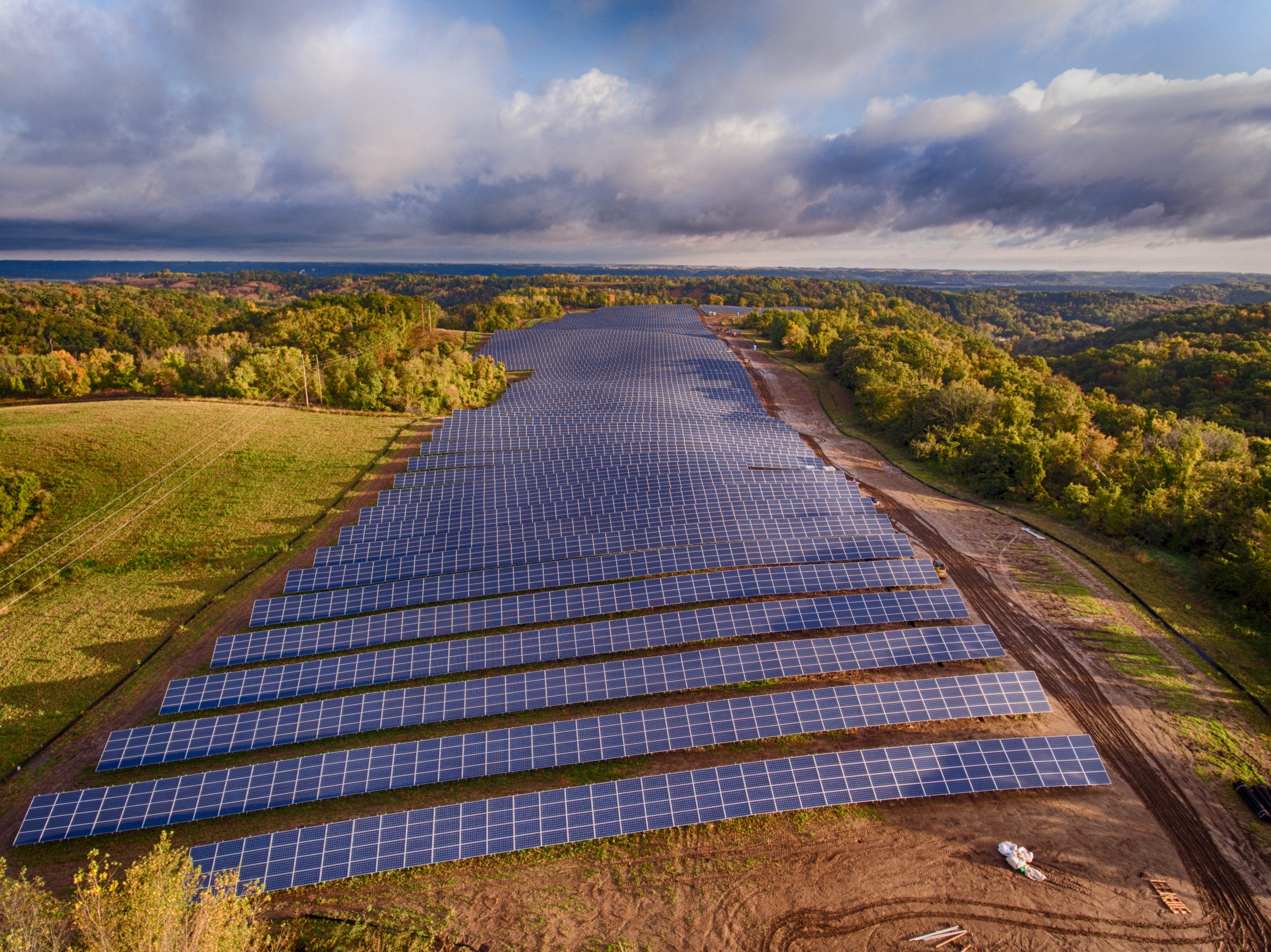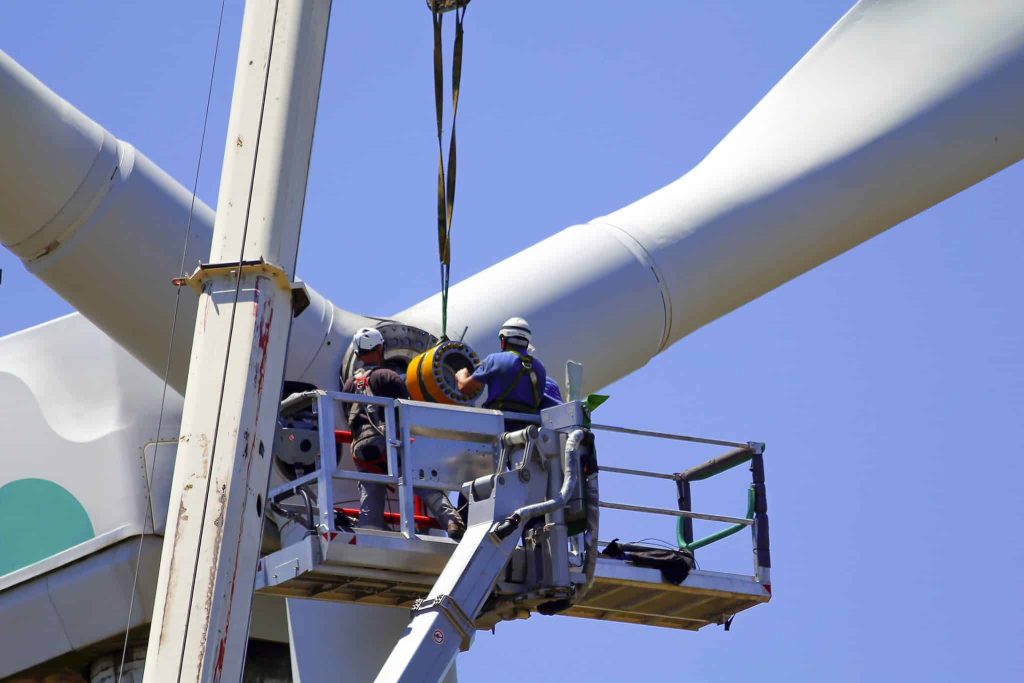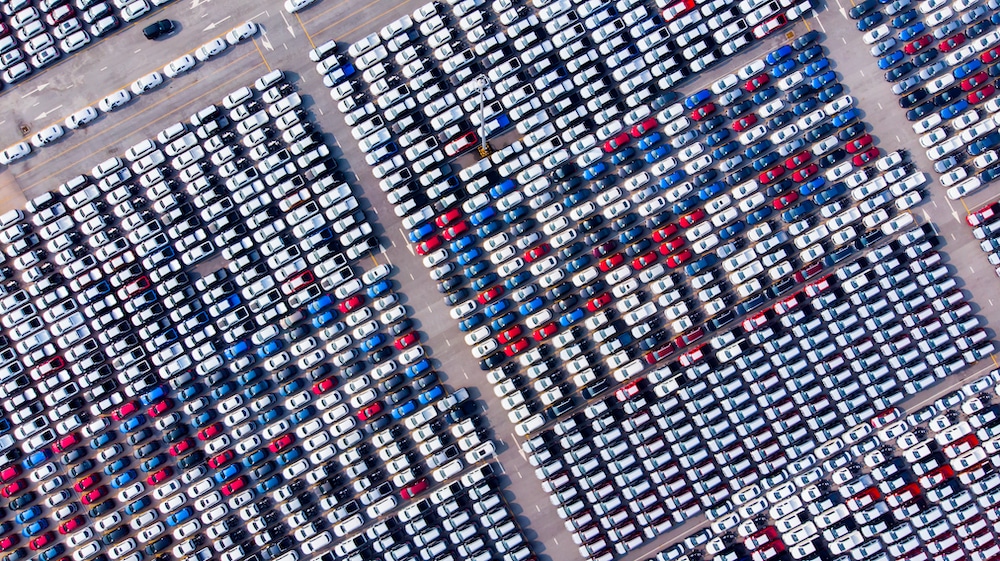This article is from the February 24, 2021, issue of Flip the Script, a weekly newsletter moving you from climate stress to clean energy action. Sign up here to get it in your inbox (and share the link with a friend).
Countries all around the world are powering toward a clean energy future. It’s clear some are pulling their weight more than others, propelled by strong ambition and effective government policies.
Let’s take a pulse across three key areas—renewable electricity generation, clean energy jobs, and EVs—to get a sense of who’s been kicking ass recently.
-

Image credit: Impact Power Solutions
Renewables powering the grid
Renewable power is moving full-steam ahead. Renewables generated around 27 percent of the world’s electricity supply in 2019, and at least 32 countries have 10 gigawatts or more of renewable power capacity (that’s a lot!). Hydropower accounts for more than half of this capacity (58 percent), followed by wind (22 percent) and solar (10 percent). Not surprisingly, the top countries for renewable capacity are also among the world’s most populous: China, the U.S., Brazil, India, and Germany. (On a per capita basis, the list looks radically different, with Iceland, Denmark, and Sweden leading the rankings.)
Here’s another way to compare countries: by the share of their total electricity generation that comes from renewables. Because of their abundant rivers and waterfalls, a surprising number of countries already generate 100 percent renewable power (or very close), largely from hydro—including Costa Rica, Ethiopia, Iceland, Norway, and Uruguay. By comparison, China’s renewable electricity share was 26.4 percent in 2019. The U.S. share is even lower—it inched from 10 percent in 2009 to 17.4 percent in 2019—but in a major milestone, wind power recently edged out hydropower for the first time ever.
Even more impressive are the countries with awesomely high renewable electricity shares but much smaller hydro contributions, like Denmark, which generated a whopping 77 percent of its power from renewables in 2019 (and nearly half from wind power alone!) Other European frontrunners include Germany (with a 42 percent renewable power share), Italy (40 percent), and the UK (38 percent).
If we take hydropower out of the equation entirely, we get an even clearer picture of the renewable revolution. In 2019, at least nine countries generated more than 20 percent of their electricity from just wind and solar, and at least four countries—Denmark, Lithuania, Luxemburg, and Uruguay—generated more than 30 percent. Uruguay is an energy transition rockstar because not only does it get nearly all of its electricity from renewables, but it does so using rising shares of wind and solar (not just hydro).

Clean energy jobs
Let’s move on to a second indicator of the clean energy transition: jobs. Globally, renewable energy employment is a growing bet, having grown from 3 million jobs in 2009 to 11.5 million in 2019. This includes direct jobs in equipment manufacturing and sales, project development (e.g., being a solar installer), and operations and maintenance, as well as indirect jobs related to supplying the industry, like the labor required to make the steel for wind turbines, or renewables-related government or consulting jobs. Of the total renewable energy jobs in 2019, a third were in the PV solar sector (and a whopping 63 percent were in Asia).
Not surprisingly, given its dominance in renewable electricity generation, China is the clear king in the jobs arena as well: in 2019, it accounted for 38 percent of all renewable energy employment. The next-biggest powerhouses are India and the U.S., although the U.S. remains woefully behind in this area and will need massive federal support to catch up. The European Union had an estimated 1.3 million renewable energy jobs in 2018, led by Germany, the UK, France, Italy, Spain, and Poland.
EV markets
A final indicator of changes afoot in the world’s energy system is the shift to electric vehicles. In total, the number of passenger EVs globally reached 7.2 million in 2019, up 40 percent from the year before. Although they still represent less than 1 percent of the world’s passenger vehicles, the share of EVs in new car sales is rising quickly, hitting a record 2.5 percent in 2019 and continuing to grow despite the pandemic.
So who’s the EV world leader, by the numbers? You guessed it: China. In 2019, China was home to nearly half (47 percent) of all electric cars on the road globally, followed by Europe with about a quarter and the U.S. with around a fifth. China is also way ahead in the EV charging race, accounting for 80 percent of the new public fast EV chargers and for just over half of the new public slow chargers that entered the market in 2019. By one estimate, China was installing more than 1,000 EV charging stations per day.
When we look at which countries are selling the most EVs by share of the new car market, however, Scandinavia takes the (entire) cake. Norway is by far the world’s superstar in the overall share of EVs in new car sales (a fact that GM’s superbowl ad calls out hilariously). Two out of every three people in Norway are buying an EV—blowing away other countries with high EV shares, like Iceland (a 25 percent share), the Netherlands (15 percent), and Sweden (11 percent). By comparison, the EV market share in the U.S. was only 1.8 percent in 2020. In a possible sign of things to come, however, it nearly doubled to 2.5 percent in December.
Expanding the transition
It’s clear that some countries are making major strides in their energy transitions, and, globally, we’re in the midst of an unprecedented shift in how we produce and use energy. Now it’s time to step up the pace, not just in key (heavily polluting) countries like the U.S., but also in energy-guzzling sectors beyond just electric power. We’ve barely made a dent in the shift to clean energy in the heating and cooling sector, even though it accounts for more than half of the world’s final energy use, and progress in transport is also lagging. Fortunately, we’ve got the know-how and the role models to get things moving—so let’s do it.
















